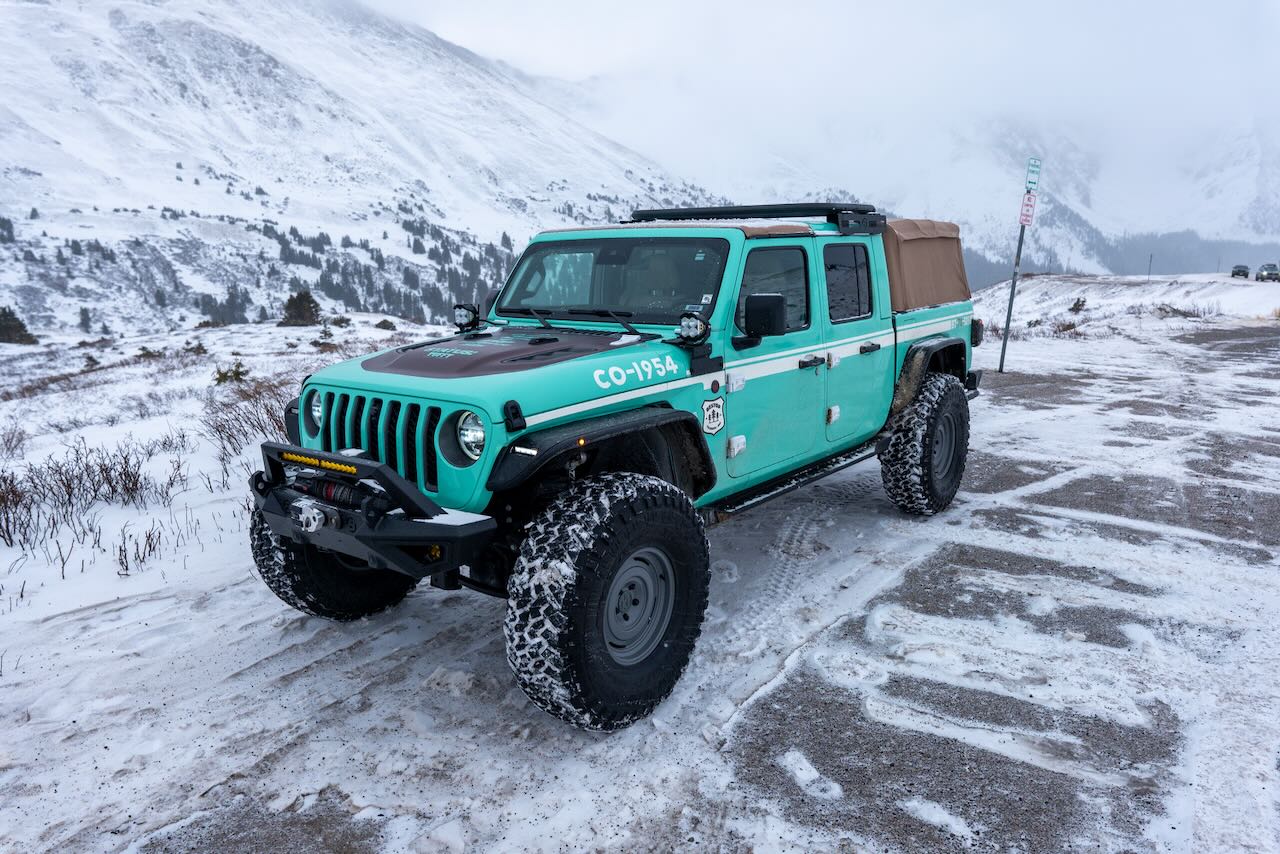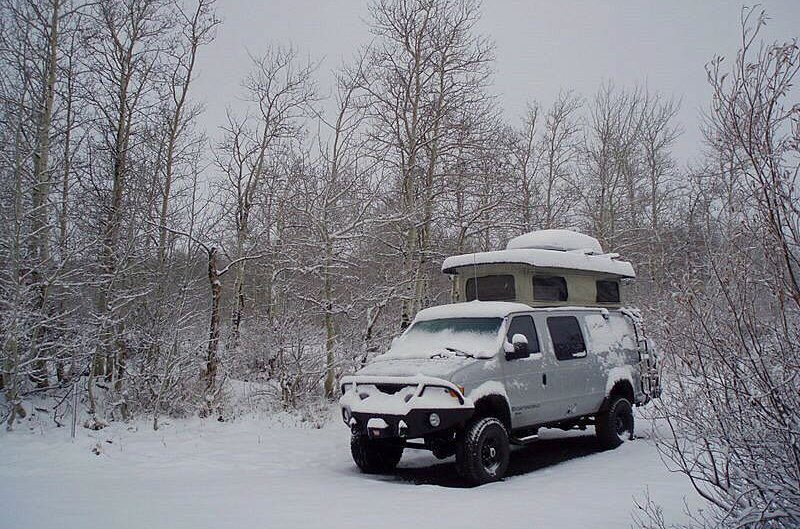
Last time, we rousted you out of your cozy chair in front of the fireplace, and got you going on preparing your vehicle for a winter off-road adventure. With confidence in your rig, you can turn your attention to making your trip a great experience for everyone in your group.
The flip side of the coin when preparing for a winter adventure is making sure you and your crew are ready to tackle harsher expedition conditions than normal. This runs two ways – planning out your adventure before you leave, and having the kinds of equipment that make a winter campsite more efficient and even downright comfortable.
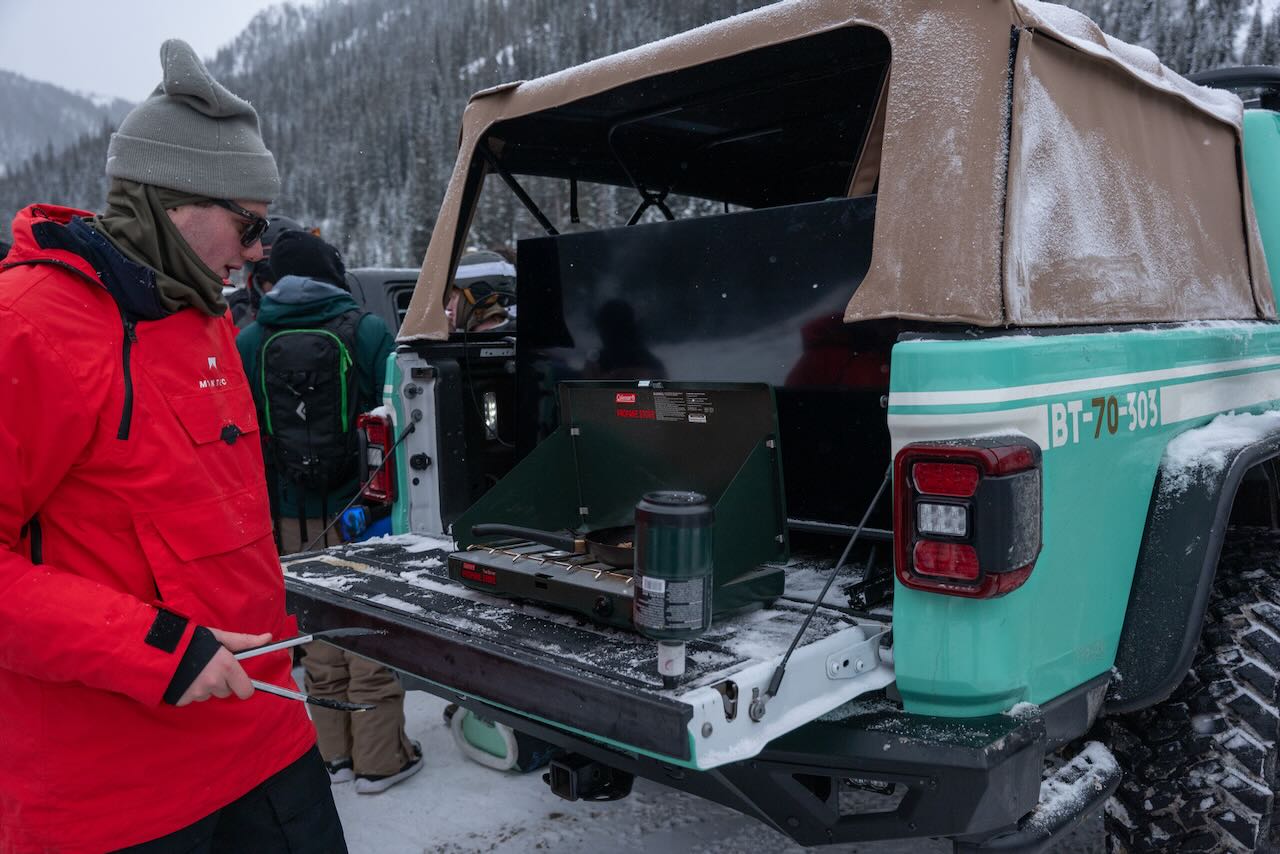
Preparation and Planning
Pre-trip planning takes on an even more crucial role for cold-weather adventures than it might for warm weather ones. During the summer, it’s easy to toss the cooler in the back of the rig, and hit the road for a long weekend without much of a second thought. Campsites will be open and available, temperatures mostly mild, and weather conditions less severe.
The weather is key here. Not only keeping close track of the local forecast, but also maintaining a constant eye on it while you are on the road is essential. Winter weather can change more quickly and more unexpectedly than at other times of the year, both in terms of temperature fluctuation and the potential for storms.
A winter expedition will require more careful scouting of potential campsites, as well as the roads that lead to them. A trail that may be open to you as you begin your journey, could become impassable if it’s subjected to multiple freeze and thaw cycles, or a storm that dumps a ton of snow overnight. Plan for multiple exit strategies and alternate routes – be flexible and maybe a little less ambitious in your route selection than you might in more mild seasons. Sticking to paths you already know is a good idea, but keep in mind that forest road you might not think twice about in August, could be a nightmare in a blizzard.
Lastly, prepare mentally. This goes for everyone in your party – especially if you are traveling with multiple vehicles (which is a good strategy for winter expeditions, in any case). Set clear expectations about where you’re headed, and what conditions will be like. Winter travel is necessarily slower than in the summer, so plan for longer days and extra time. It often also means using more fuel than usual – carry extra and make careful calculations about your consumption. Be reasonable in your expectations about what you can accomplish. Be ready to accept that you may need to turn back, change your plans dramatically, or end your trip early altogether should things become unsafe.
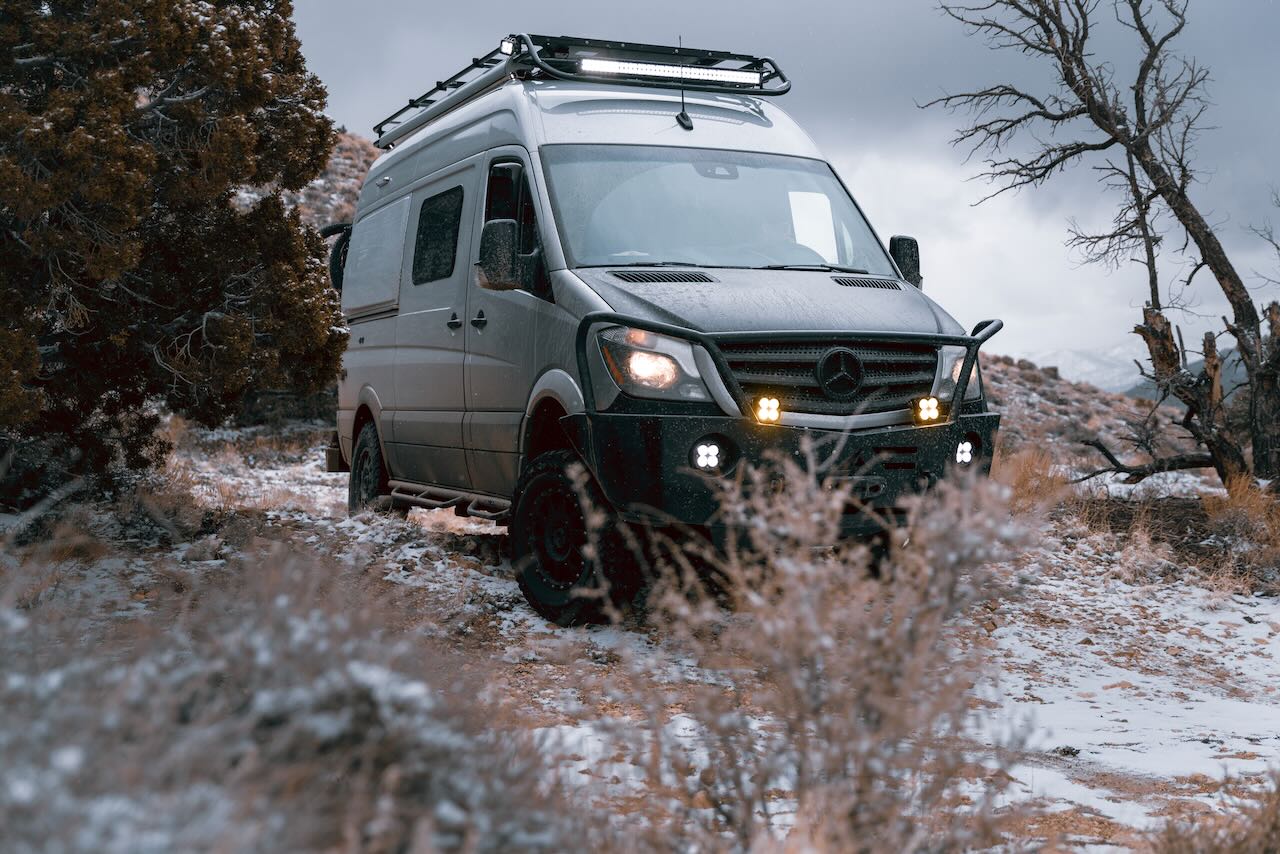
Getting Comfortable in Camp
Another set of challenges for cold weather expeditions revolve around life in camp. For me, the watchword for winter camping is efficiency. The more quickly you can get set up and fed, the more time you have for gathering around the fire and relaxing, or throwing snowballs with the kids. This goes for any overland campsite, but it takes on extra urgency when things get really cold. Know where your equipment is stored, practice putting up and taking down that ground tent or roof tent. Put everyone to work – less slacking off means more warmth!
Pre-prepared meals that can simply be reheated, or freeze-dried backpacking meals that only require boiling water are my preference for food on winter expeditions. Trying to cook a gourmet three-course camp meal when it’s 15 degrees and windy is not much fun, but cradling a steaming mug of soup in your gloved hands while the snow falls gently around you is amazing. Really good insulated cups and thermoses can keep hot beverages on the simmer and at the ready for hours.
Staying clean and dry in winter environments also takes some preparation, especially in and around the vehicle. An extra layer of protection for your interior not only defends against water damage and wear and tear, it also makes clean-up after the adventure much easier. Custom-fit seat covers can repel moisture, and tough floor mats and cargo liners keep muddy feet, snow, and water off of floors and carpets.
With winter comes darkness, and energy-efficient lighting in and around your camp will not only create a cozy atmosphere, but also add to the safety factor by reducing tripping hazards on slippery surfaces. Baja Designs work lights, rock lights, and dome lights shine the lumens exactly where you need them, and come in an array of useful and funky colors.
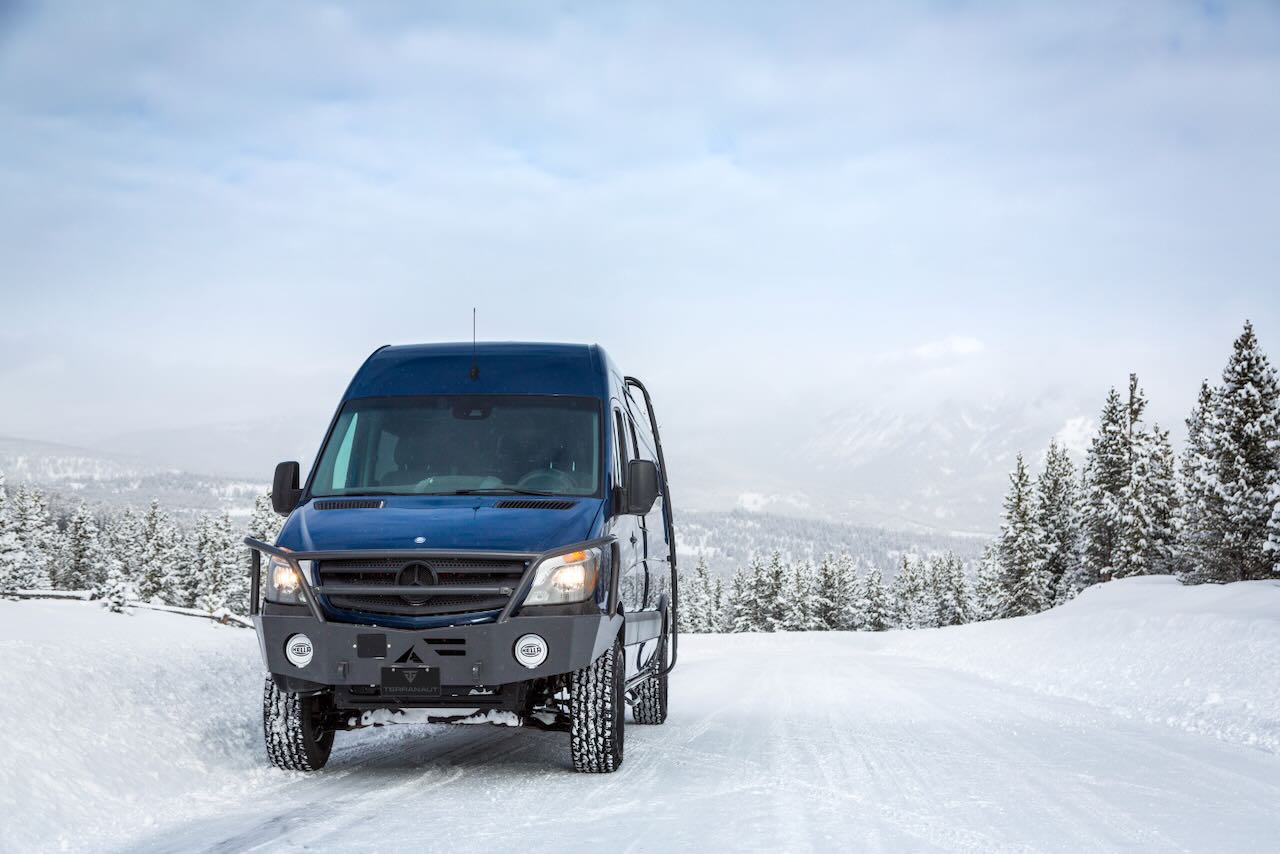
Turning Up The Heat
Of course, the main thing on everyone’s mind on a winter expedition is staying warm. This is not just an issue of comfort, it’s also one of safety. Know the signs of hypothermia, and keep an eye on your companions, especially in contexts where you may be likely to get wet, or repeatedly build up a sweat, and then quickly cool off – such as during a vehicle recovery. Check in regularly to make sure nobody is suffering unduly because of the cold. Remember, you can always retreat to the warmth of your vehicle’s cab if those toes get a little too frozen.
Packing more layers than you think you need, especially socks, breathable base layers, and storm shells, will go a long way to keeping you comfortable. Make sure your sleeping bags are temperature rated for the conditions you expect, and consider adding a sleeping bag liner. Some can bump the temperature rating of the bag in your favor by 10 degrees. Plan on a strategy for keeping wet and grimy boots out of tents or campers – you want to stay as dry as possible in your sleeping space.
A steel portable fire pit adds to the atmosphere of any campsite, but it comes in particularly useful in snowy conditions to get the fire up off the ground. You may need to pack in your own firewood if it’s especially wet where you’re headed. While you may scoff at such crutches, chemical or paraffin fire starters are a go-to for me in the winter when dry kindling is hard to track down, and you want the fire NOW.
Embrace the Cold
Above all, take advantage of the unique experiences cold weather adventures have to offer – solitude, the muffled silence of a snow-covered camp, skiing or snowshoeing, the chance to see new birds and wildlife… feeling way tougher than your friends who stayed home in front of the fire.
